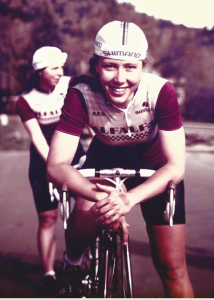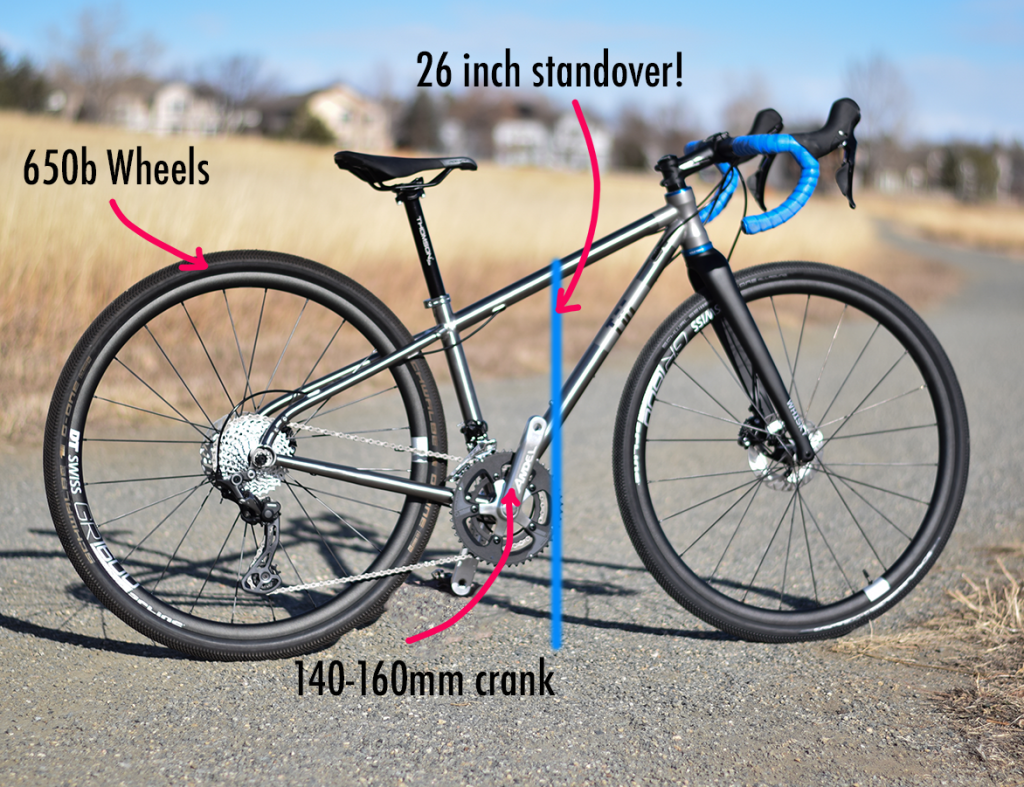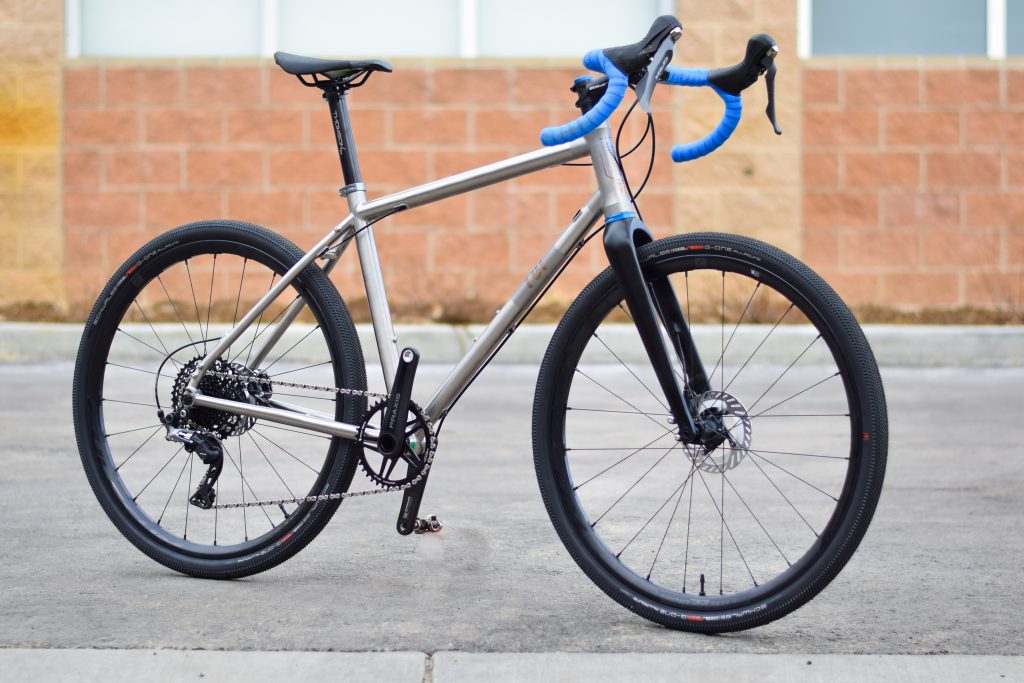Do Women Need Women’s Bikes?
By Lennard Zinn
Women’s bikes and women-specific components have become a big part of bike sales since appearing as a concept in the early 1990s. Historically, women’s bike products were mostly limited to apparel, some saddles, low-end small bikes, and “girl’s bikes” with a step-through “mixte-frame” design featuring a low top tube angling down toward the crank. Women could mount mixte bikes easily by stepping through the frame without getting their skirts and dresses caught on the saddle and tangled in the spokes of the rear wheel (some bikes even had netting attached to fenders to keep skirts out of the spokes).
In 1983, when I, along with my wife, Sonny, and Karen Hornbostel, founded Team Zinn/Alfalfa’s/Shimano, Colorado’s first all-women’s cycling team, a top-quality road bike for a small rider was a rarity. Georgena Terry had built a business catering to female cyclists, but her bikes could not be realistically raced, because they had a 24” front wheel to avoid toe overlap of the front tire on a bike with a short top tube. I felt a calling to address the dearth of good women’s racing bikes, and, with the highly-visible “Zinn Team” racing on my bikes, the majority of Zinn customers in the mid 1980s were small women.

The bike business has often tried to put all women in a single basket when it comes to design. One example is the women’s saddles of the 1970s and 1980s, whose primary features were short overall length and great width in the rear. Their makers claimed that women have wider pelvises than men due to the demands of childbirth and hence need a wider saddle. Now that we have tools to easily measure sitbone width, it’s clear that this was an inaccurate general characterization.
Another example of misguided lumping of all women into a single category that women’s bike design should be based on was the idea that women have long legs and short upper bodies relative to men. There are, of course, lots of examples of women for whom the opposite is true.
One generalization that is true is that women on average are smaller than men. So, on average, their bike frames should have both shorter seat tubes and top tubes. The short top tube presents the toe-overlap problem that Georgena Terry addressed with the small front wheel on Terry bikes.
Now that lightweight, high-end “Women’s Specific Design” (WSD) bikes from big manufacturers are widely available, there is no longer the dearth of good racing bikes for small women and junior racers that there was until a few decades ago. However, a small rider should understand some of the compromises that were made to offer a complete size run of a bike model from very small to at least medium size with a consistent component package on all of them.

Since brand-name cranks generally don’t come any shorter than 165mm or 170mm, the rider’s feet will be rotating in a disproportionately larger circle than will taller riders, resulting in sharper joint angles at the knees and hips. And these disproportionately-long cranks will also bring the rider’s feet closer to the front wheel, so compromises are made in the frame design to not have the shoe hit it. One of those is to make the top tube longer than ideal, so the rider will need to be either uncomfortably stretched out and/or will have a super-short stem, making handling squirrelier, especially when climbing. Another compromise to avoid toe overlap is to reduce the head-tube angle to move the front wheel forward while still using the same fork as the other sizes. Since the fork is the same as the other sizes, its offset (rake) has not increased despite the reduction in head angle. This results in greater fork trail (the distance on the ground between the steering-axis intersect and the tire contact patch) and a heavier steering feel and lots of swerving at low speeds.
The other design compromise made to keep the foot from hitting the front tire is to make the seat-tube angle steeper, thus moving the bottom bracket back, away from the front wheel. But this effectively makes the top tube longer than the advertised top tube length, because the rider will need to push the saddle further back to attain the same fore-aft position relative to the pedals as with a shallower seat angle.

The saddle is one women’s component whose design has indeed progressed greatly in recent years. Firstly, measuring the width of the rider’s sit bones and selecting an appropriate saddle width for the individual customer and their riding needs has become standard. Secondly, actually addressing the fundamental differences in male and female genitalia and how the saddle affects them has been a breakthrough. No longer assuming that the saddle cutouts designed to prevent male impotency and prostate problems would also be the ideal design for women, Specialized’s Mimic and Mirror trampoline-like features in the saddle nose have made a huge difference for many top female road and gravel racers. However, those saddles may not be ideal for women riding in a more upright position.
Ideally, a woman’s bike should fit her individual body and riding style. That goes for the frame dimensions, the crank length, the handlebar width, the stem length, and the saddle dimensions and features. She shouldn’t have to compromise her comfort on the bike and her ability to propel it efficiently simply because it is expedient for the bike manufacturer to stick with the same fork, cranks, and other components as the rest of the size range of that bike model.
As a frame builder, Lennard Zinn has been designing and building custom bicycles for over 42 years; he founded Zinn Cycles in 1982. His Tech Q&A column on Substack follows his 35-year stint as a technical writer for VeloNews (from 1987 through 2022). He is a former U.S. National Cycling Team member and author of many bicycle books including Zinn and the Art of Mountain Bike Maintenance, Zinn and the Art of Road Bike Maintenance, and The Haywire Heart. He holds a bachelor’s degree in physics from Colorado College. Readers can send brief technical questions to: [email protected].
Follow Lennard Zinn on Substack, Strava, X, Instagram, LinkedIn, or Facebook.


